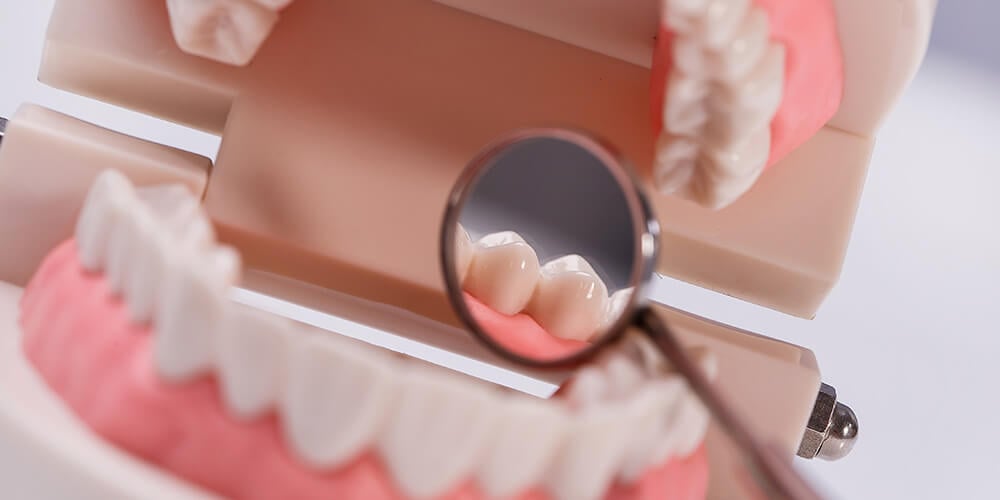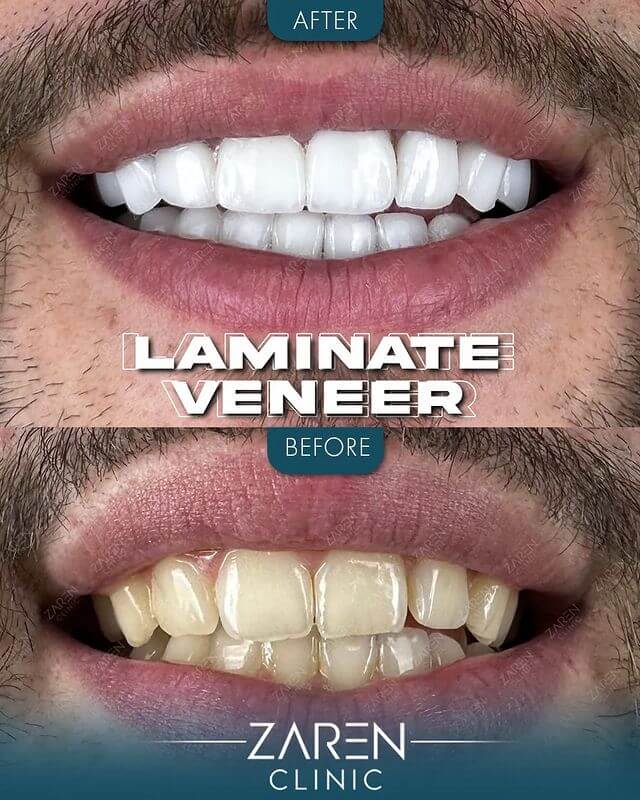Home » The Durability of Laminate Veneers: How Long?

For most patients, long-lasting dental veneers provide an inexpensive and less invasive way to enhance the esthetics of their smile. Veneers have been used since the 1920s in esthetic dentistry when they were first fabricated from pure gold. In 1930, Michael Buonocore etched the enamel of teeth using phosphoric acid as surface treatment to enhance the bonding of different restorative materials. Further refinements to the bonding procedure increased usage over time of durability of veneers made from porcelain laboratory-fabricated facings bonded to the labial surfaces of anterior teeth using composite resin. They are generally more aesthetically pleasing, more color stable, more durable, and less likely to delaminate from the teeth; they also provide a better fit to the underlying tooth and surrounding soft tissues compared with ceramic veneers directly fabricated in the mouth.
As such, long-lasting dental veneers can be considered a relatively conservative preparation technique compared to full crowns. Reducing the volume of tooth tissue only on the labial surface directly exposed in the smile is a major concern for the dental profession responsible for healthy teeth and soft tissues. The two major advantages on what is laminate veneers are minimal invasive measures as well as their durability. In principle, it is important that they are made of materials having the physical and mechanical properties that ensure they resist the oral environment and the thermo-mechanic forces that have been applied to teeth for such resistance.
Veneer restoration constitutes one of the most important treatment options in dentistry, where the maximum conservation of dental tissues is highly demanded. Long-lasting dental veneers can be defined as the partial-coverage restoration for anterior teeth with a thickness ranging from 0.3 to 1.0 mm. In addition to their conservative nature, durability of veneers can result in superior aesthetics due to their optical characteristics, since enamel is mainly responsible for the overall color of the tooth and the quality of transmitted light in some restorative devices. Consequently, long-lasting dental veneers represent a satisfactory option for achieving convincing aesthetics, especially for discolored teeth, diastemas, and enamel defects. In aforementioned cases, long-lasting dental veneers may supply not only aesthetic superiority but also function satisfaction by re-establishing the canons of the mouth.
The reported durability of veneers ranges in the literature from 92.7% estimated at 10 years up to 90.3% at 20 years of clinical service. As can be suspected, this range is shaped mainly by the operator talent and skill and degree of adherence to sound practice guidelines. In addition to the quality of material, maintaining the adhesive bonding to facilitate maximum conservation of both dental tissues and the laminate restoration is crucial. Generally, lifespan of laminate veneers can fail for various reasons. Percentage of fracture constitutes an astounding 82% of all failures. Surface roughness caused by ceramic and adhesive material loss through wear and staining may represent other causes of degradation. Simply because durability of veneers are not a panacea and since survival traits are clinically a vague function of innumerable factors, they are by no means a lifetime or permanent prosthesis in ceramics.

Some recommendations are provided to enable the successful clinical use of long-lasting dental veneers as a conservative and aesthetic treatment modality for various patient groups. Although laminate veneers have been successfully used for over 40 years, dentists should be aware of the potential complications that can occur throughout this time period. Depending on the oral hygiene and dietary habits of the patients, the type and position of the laminate veneers (e.g., in the anterior dentition in comparison to the posterior area), and additional interventions in the oral cavity (such as tooth whitening or dental implant placement), it is possible that they may have to replace veneers before they fail.
Veneers should be placed where they are needed and wanted, and because the patients understand that they have to take proper care for an unspecified duration. To encourage the long-lasting dental veneers use as well, tips for the treatment with durability of veneers are also given, and best practices for their use are described. If long-lasting dental veneers are crushed by mechanical means or become cold, then hot due to the heat conduction, they could fracture. The same applies to ice cubes, in the front area, fresh bread rolls, or vegetables from the freezer, or real fruit juice with ice cubes. Tips for proper oral care with long-lasting dental veneers and tips on the proper diet can help improve the durability of long-lasting dental veneers, whereby foods are eaten and drinks are drunk. Regular visits to the dentist are also recommended to professionally clean dental plaque and perform dental screening. This is important for maintaining or regaining the aesthetics of the natural and restored dentition.
Because of the relative recency of their invention, impressively long-term longitudinal studies are difficult to come by. Thus, the available data on the lifespan of laminate veneers is limited, and the evidence is mostly only a few years old. In the near future, however, we can expect to see a greater number of studies measuring the long-lasting dental veneers, which will produce more robust results. Since the list of possible mechanical, technical, biologic, and esthetic factors underlying damage due to wear is long, future research on laminate veneer longevity will require a more comprehensive and standardized design if its results are to be aggregated and generalized. There are also some promising new laminate manufacture techniques under development. Ultimately, it is reasonable to expect that the future of this burgeoning field will include stronger, more durable lifespan of laminate veneers that last even longer without requiring attention.
Lifespan of laminate veneers can be a difficult topic to tackle, since the anatomy and clinical cases involving what is laminate veneers vary widely, and offered specifics depend heavily on factors that may be unique to individual patients. However, a few generalizable and useful insights have been gleaned from the available literature. Long-lasting dental veneers are subject to mechanical damage and marginal staining over time—on average, a laminate veneer lasts about 15 years, and repairs begin to be needed after even less time, around 12 years.
Hello!